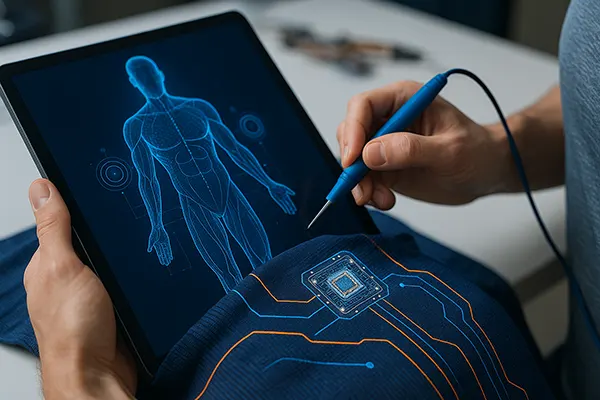Electronic Textile Technologies: The Future of Smart Clothing

Electronic textile technologies are rapidly transforming the way we perceive and interact with clothing. As innovation continues to merge fashion with functionality, smart fabrics are becoming integral to industries ranging from healthcare to sports and everyday fashion. This article explores the evolution, current applications, and future potential of electronic textiles in the modern world.
The Evolution of Smart Clothing
Electronic textile technologies, also known as e-textiles, have emerged from the intersection of textile manufacturing and advanced electronic systems. Initially, the concept was met with skepticism due to the complexity of integrating circuits within flexible materials. However, breakthroughs in nanotechnology and conductive fibers have propelled smart clothing into the mainstream.
Early developments primarily focused on embedding sensors into fabric to monitor physiological data. For instance, athletic wear with heart rate monitoring or temperature-regulating capabilities demonstrated the practical application of such innovations. Today, the integration of flexible electronics, such as printed circuit boards and microcontrollers, has taken smart clothing to a new level.
Another pivotal moment in the evolution of smart textiles was the adoption of power-harvesting mechanisms, enabling clothing to generate and store energy. These advancements not only made e-textiles more self-sufficient but also paved the way for broader applications beyond simple monitoring.
Challenges in Developing Smart Fabrics
Despite the progress, developing reliable and durable electronic textiles presents significant challenges. The primary issue lies in maintaining fabric flexibility while ensuring electronic stability. Traditional circuits tend to break when bent or washed, which undermines the practicality of smart clothing.
To address these challenges, researchers are focusing on creating stretchable, water-resistant, and washable circuits that can withstand everyday use. Conductive polymers and graphene-based materials are at the forefront of these efforts, offering both flexibility and durability.
Another challenge is integrating power sources seamlessly. While some designs use batteries, the latest innovations focus on energy harvesting through body heat or movement. This approach aims to reduce the need for external charging, making the technology more user-friendly.
Applications of Smart Clothing in Everyday Life
Smart clothing is revolutionizing various sectors, from healthcare to sports and even workplace safety. In healthcare, garments embedded with biosensors monitor vital signs, alerting medical professionals to anomalies in real-time. These innovations improve patient care by providing continuous monitoring without the need for intrusive devices.
In sports, smart fabrics track performance metrics such as heart rate, muscle activity, and hydration levels. Athletes and trainers can make data-driven decisions to optimize performance and prevent injuries. Moreover, clothing that regulates temperature or wicks away moisture enhances comfort and endurance during workouts.
Additionally, workplace safety is benefiting from smart textiles that detect harmful environmental conditions, such as high levels of radiation or toxic gases. Workers equipped with such clothing are better protected and more aware of potential hazards, reducing workplace accidents.
The Role of AI and IoT in Smart Clothing
The integration of artificial intelligence (AI) and the Internet of Things (IoT) into smart textiles is a game-changer. AI algorithms process the vast amount of data collected by sensors, offering personalized insights and adaptive responses. For instance, a smart shirt might automatically adjust ventilation based on body temperature or suggest hydration if dehydration is detected.
Moreover, IoT connectivity allows smart clothing to sync with mobile applications, enabling users to monitor their health and performance from their devices. This connectivity also supports remote monitoring, which is crucial in healthcare and fitness applications.
The combination of AI and IoT enhances the overall functionality of smart clothing, making it not only interactive but also predictive and responsive to the wearer’s needs.

Future Perspectives and Market Potential
The market for electronic textile technologies is expected to grow exponentially over the next decade. As manufacturing processes become more efficient, the cost of smart clothing is projected to decrease, making it accessible to a broader audience. This shift will likely accelerate the adoption of e-textiles in everyday fashion.
Research into self-healing materials and biodegradable electronics also points to a more sustainable future. As concerns about electronic waste increase, these innovations could make smart textiles more environmentally friendly.
Furthermore, collaborations between tech companies and fashion designers are essential for creating aesthetically pleasing and functional garments. The fusion of technology and fashion will likely lead to unique collections that offer both style and intelligence.
Ethical Considerations in Smart Clothing
While the advancements in e-textiles are promising, ethical questions regarding data privacy and security remain. Smart clothing collects a significant amount of personal data, raising concerns about how this information is stored, shared, and protected.
Manufacturers must ensure robust encryption and transparent data policies to maintain user trust. Additionally, regulations surrounding data ownership and consent need to evolve alongside technological developments.
As the line between personal devices and wearable technology blurs, addressing these ethical issues will be paramount to the responsible development of smart clothing.
